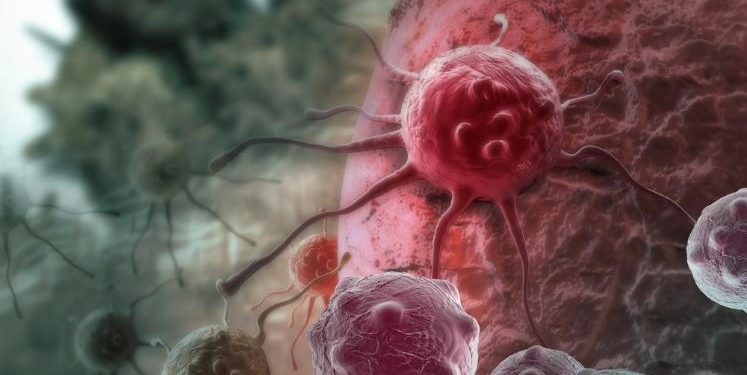Symptoms include bone pain, high levels of calcium in the blood (hypercalcemia) and kidney problems, low numbers of healthy white and red blood cells (anemia), and difficulty clotting. You may also have abnormal proteins in the urine, called Bence Jones proteins.
Doctors diagnose multiple myeloma based on symptoms, a physical exam and lab tests. These include a blood chemistry test, MRI or CT scan and a bone marrow biopsy.
Symptoms
Plasma cells form in the bone marrow, the soft, spongy tissue inside most bones. When these cells become cancerous, they crowd out the normal blood-forming cells in the bone marrow and disrupt the balance of certain minerals like calcium. They also start producing abnormal proteins that can cause bone damage, high levels of calcium in the blood, and other serious problems. Myeloma cells are also more likely to make antibodies that attack other organs.
Symptoms of multiple myeloma vary from person to person. They can be mild or severe and depend on how much myeloma has spread, whether it has damaged the kidneys, and other factors. The first symptoms often include pain in the back, rib cage, or hips. It may feel worse when you move or when you breathe deeply. Bone pain may be caused by a tumor pressing on the bones, or it can be due to the breakdown of the bone tissue itself. It is also possible for myeloma to damage the spinal cord and cause numbness or weakness in the legs or arms.
Other signs of myeloma include a fever, a lack of energy, and anemia. Anemia makes the body less able to fight infections. It can also cause tiredness and shortness of breath with activity. Other symptoms of multiple myeloma include a loss of appetite, weight loss, and confusion. Confusion can be related to high calcium levels in the blood (hypercalcemia) or to kidney failure.
Diagnosing multiple myeloma starts with a physical exam and blood tests. Your doctor will ask about any past illnesses and risk factors for multiple myeloma. The blood test looks for abnormal antibodies called M protein and other substances that are higher in people with multiple myeloma.
Your doctor may recommend a bone marrow biopsy to find out how many plasma cells are in the bone marrow and to check for other signs of myeloma. For this test, your doctor inserts a needle into a bone, usually in the hip, and removes a small sample of marrow for further testing. You might also get imaging tests, such as an X-ray or a CT scan.
Diagnosis
Many people are first diagnosed with multiple myeloma after having a blood test done for another reason. Other times, a health care professional finds multiple myeloma because of your symptoms or your family history. Your health care team will perform a series of tests to find out if you have multiple myeloma or another condition called monoclonal gammopathy of undetermined significance (MGUS).
A sample of your blood will show if there are any M proteins in your body. These proteins are made by myeloma cells. A urine test can also help make a diagnosis. Myeloma cells release these M proteins into the urine, where they are often found. The test looks for a protein called Bence Jones protein. This is a sign of multiple myeloma.
X-rays, a magnetic resonance imaging (MRI) scan and CT scans can help your health care team look for bone damage caused by myeloma. Your doctor may also do a bone marrow biopsy to check for multiple myeloma. For this, your healthcare provider uses a needle to remove a small amount of bone marrow from the center of one of your bones. The area is numbed with a local anesthetic before the procedure. Your doctor will also do a blood chemistry test to look for certain chemicals in your blood, such as calcium levels and lactic dehydrogenase.
Other tests might include a serum free light chain assay and an electrophoresis test to look for proteins in your blood. Your health care team will also order a urine test for Bence Jones protein and a urinalysis to see if you have other proteins in your urine.
Your health care team will use all the information from these and other tests to confirm the diagnosis of multiple myeloma and find out which stage of the disease you are in. This helps your team plan treatment.
You will need medicine that kills cancer cells or prevents them from growing, as well as drugs to control your symptoms and reduce the risk of complications. You may take chemotherapy drugs, immunomodulatory medicines and corticosteroids. You may also get a stem cell transplant or a combination of these treatments. You may also take bisphosphonates, which are medicines that slow bone breakdown. Examples of these include pamidronate and zoledronic acid. These can damage your teeth and jaw, so it’s important to brush and floss well while you take them.
Treatment
Your team of doctors decides whether you need treatment straight away and what type. They base this on results of blood tests, bone marrow tests and scans. You might not need any treatment at all if you are well and doctors find multiple myeloma by chance, for example in people with smoldering myeloma (an early pre-cancerous form of the disease). Your doctor will check you regularly to see when it is safe to start treatment. This is called active surveillance. Treatment options include medicine to prevent or ease bone pain, medicines to help bones stay stronger, and drugs to treat other symptoms.
Abnormal plasma cells are produced in the bone marrow and multiply rapidly, crowding out healthy red blood cell-forming cells. They also produce a protein that can damage healthy tissue and cause infection. This abnormal protein is found in the blood and urine as monoclonal proteins or paraproteins, which are sometimes used to diagnose myeloma.
The most common treatment is high dose chemotherapy, with bortezomib and lenalidomide or doxorubicin and dexamethasone. It is usually followed by stem cell transplant. The most commonly done stem cell transplant is autologous hematopoietic stem cell transplantation (ASCT) using your own blood-forming cells. You will receive high-dose chemotherapy first to kill the cancer cells and then have your own stem cells returned to you through a vein in your arm.
Alternatively, you may have a stem cell transplant using donated stem cells. This is only available in some clinical trials.
A blood-forming stem cell transplant does not cure myeloma, but it can extend overall survival and improve quality of life. This is particularly important if you are older, as it can significantly reduce the risk of serious side effects.
There are also new treatment options for people who have relapsed or refractory multiple myeloma, including a combination of medications called melphalan and dexamethasone, as well as a newly approved treatment called a chimeric antigen receptor T cell therapy (CAR T). This is a treatment where doctors remove T cells from your body (workhorses of the immune system) and then use a disarmed virus to program them to target and kill cancer cells. The FDA has recently approved the use of CAR T therapy targeting BCMA in relapsed or refractory myeloma, and MSK researchers are now developing combination therapies that target BCMA and another immunologically active protein, GPRC5D.
Side effects
The symptoms of multiple myeloma can be similar to many other medical conditions. Only a doctor can tell you for sure whether your symptoms are caused by myeloma or another problem. X-rays and other imaging tests can help identify areas of damage or disease in your bones. Blood and urine tests can also help detect certain proteins that are more common in people with myeloma.
If your bone marrow isn’t working well, you may have a lack of red blood cells (anaemia). You might also develop kidney problems or have a lot of fluid buildup in the body (edema).
Your treatment plan will depend on how bad your myeloma is and what stage it is at. Your doctor will work with you to decide what’s best for you.
The first treatment you might have is a mix of medicines to kill cancer cells and improve your overall health. This might include medicines called bisphosphonates, which are used to prevent the breakdown of bones and reduce pain. You might take them as pills or get them through a needle in your arm (intravenously). Examples of these medicines are pamidronate and zoledronic acid.
Other treatments might include chemotherapy or a stem cell transplant. Your hematologist will discuss these options with you.
If you aren’t ready to have a bone marrow transplant or your myeloma has recurred, your hematologist might give you another course of high-dose treatment. He or she might ask if you want to be in a clinical trial that tests new treatments for myeloma.
Talk to your hematologist about your choices for treatment, side effects and practical concerns like extra cost before you make any decisions. Try to write down questions ahead of time so you won’t forget them during your appointment. Bring a family member or friend to your appointment for support and to help you remember what your doctor says. This person can also remind you to take your medicine on schedule. If you’re worried about being too tired or weak to do your daily activities, your doctor might prescribe medicine to boost energy and improve your appetite.









